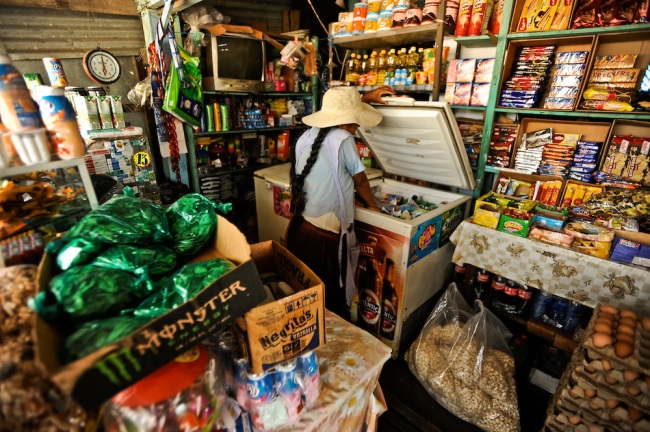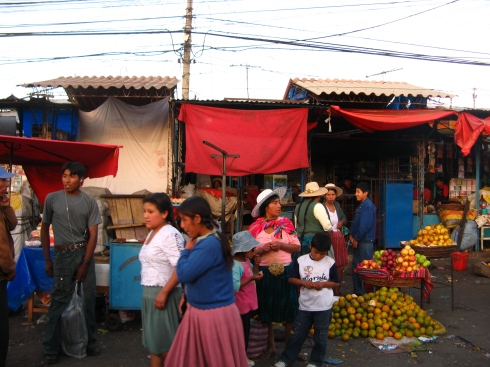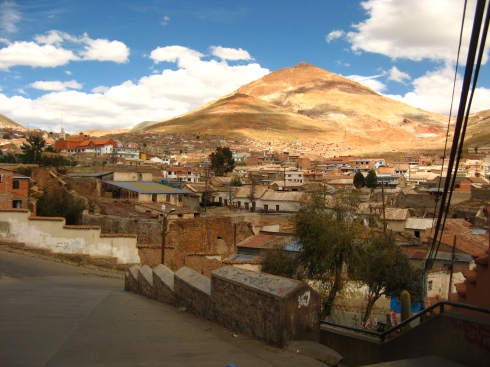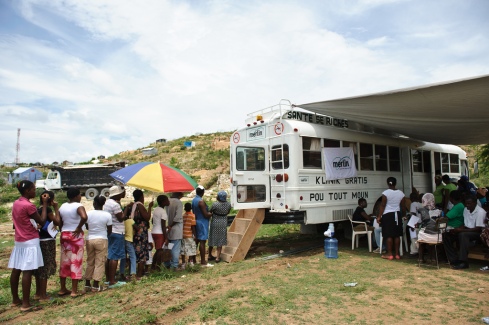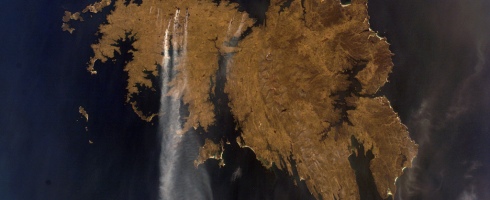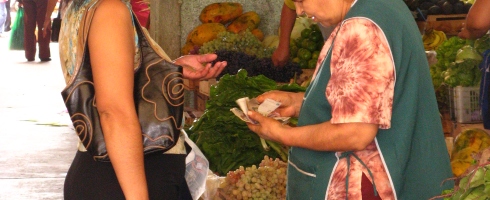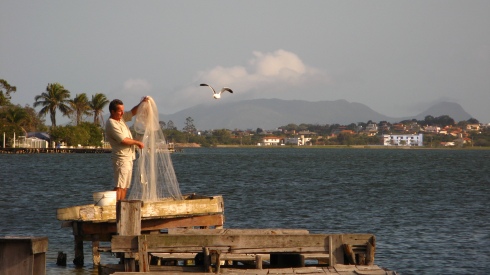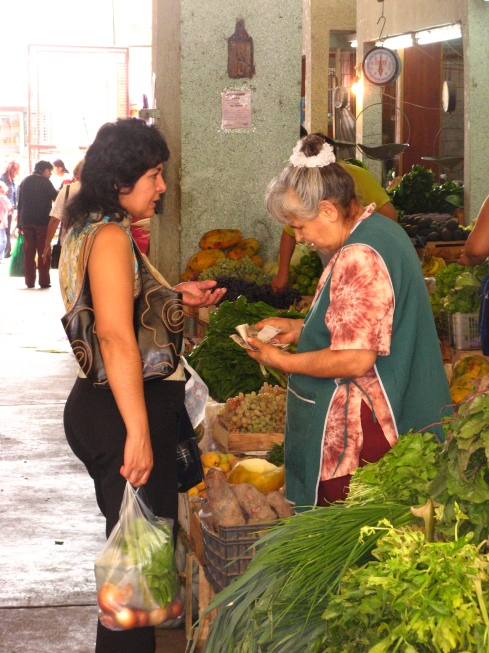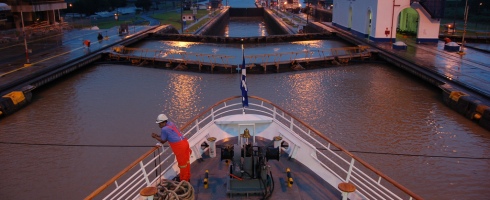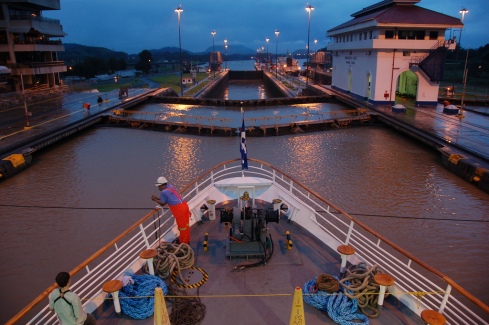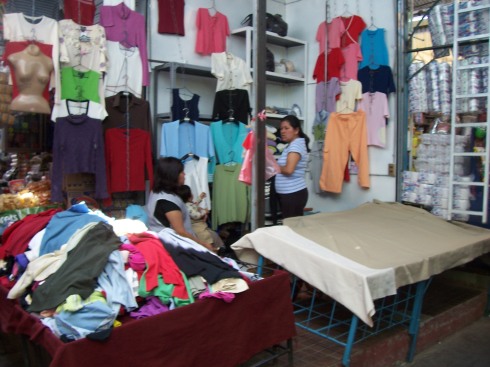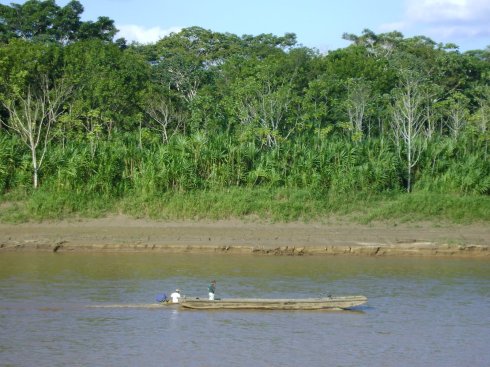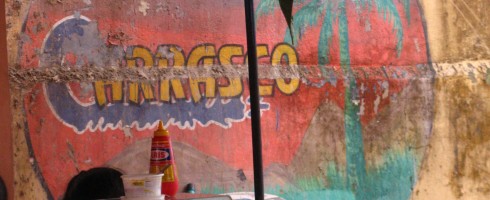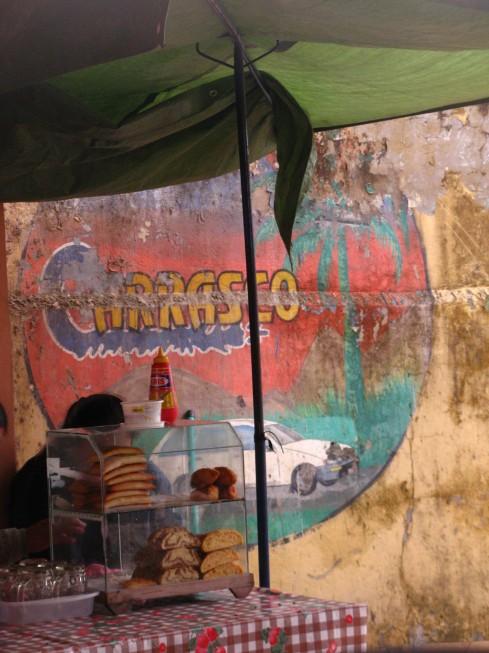Today is the 40th anniversary of the overthrow of Chilean president Salvador Allende by General Augusto Pinochet, leading to the reign of terror whose legacy still plagues Chilean society today. I’m off to see two films marking the event, ‘Death and the Maiden” and “Nostalgia for The Light” tonight at Bolivar Hall, both recommended by my human rights tutor Par Engstrom at UCL’s Institute of the Americas where I’ve just completed my MA in Latin American Studies.
Thinking back to what I learned about Chile and the Pinochet era in that class, this week I dug out three of the sources I found more useful in learning about that time and about its legacy: Patricia Verdugo’s “Chile, Pinochet and the Caravan of Death“, Leigh Payne’s “Unsettling Accounts: Neither Truth nor Reconciliation in Confessions of State Violence (The Cultures and Practice of Violence), and the essay “Irruptions of Memory: Expressive Politics in Chile’s Transition to Democracy” by Alexander Wilde. I used all of these in my examined essay for the human rights class. which I present below. This was my first ever academic essay writing exercise (I don’t think you can count GCSE level!) and I picked a horribly complex, un-black and white issue, arguing that reconciliation after such atrocities as committed by the Pinochet regime can never be settled of wiped off the national psychological accounts, so rather, society must seek to bring ‘victims’ and ‘perpetrators’ together with equal value, to find common ground.

Margaret Thatcher and Gen. Augusto Pinochet, March 1994, Santiago de Chile. Photo: powerunion.com
Of course, this is a hugely challenging and controversial viewpoint, and my essay can probably be accused of being naive, idealistic, unrealistic, ignorant, and coming from the easy standpoint of someone who has only ever read about such atrocities, never experienced them. I would not argue forcefully against those accusations, but I found the experience of reading widely about truth and reconciliation efforts, ‘contentious coexistence’, and cases where this process had taken place seemed to point to a truth: that after so much pain, hate, fear, and generations deep, no amount of retribution or ‘reconciliation’ can change memory. Chile’s own truth and reconciliation efforts are regarded at the success benchmark for other countries that have tried to deal with such atrocities in this way, but Wilde’s essay makes plain shortcomings and failures in that approach, though it is regarded as the best one on offer. But people have to live, and find a way to go on, so I examined cases where, beyond simple ‘truth telling’ followed by simple ‘reconciliation’, forms of contentious coexistence between ‘victoms’ and ‘perpetrators’ of violence had been tried in Chile and Colombia, arguing for this model. I imagine that there would be a range of views on this essay, but in memory of the events in Chile, and to show how ‘live’ and complex those legacies are today – for those affected and students of the time – I’m posting it here.
I highly recommend reading the three sources above: only Wilde’s paper reads in the ‘scholarly’ style that some find hard to process, but is still compelling enough to be worth the effort, while the two books are ‘plain English’ in their style and are very accessible, if grim.
“A problematisation of the victim-perpetrator dichotomy in Chile and Colombia to propose ‘contentious coextistence’ as a form of national reconciliation”
Summary
Much of the scholarly debate around reconciliation within the transitional justice context is heavily biased towards the perspective of victimhood of an authoritarian regime – the tortured, the disappeared, the murdered. Human rights law applied through truth and reconciliation commissions seek reparations for victimhood, through which post-authoritarian democracies offer their societies national reconciliation. This essay asserts that this bias towards victimhood comes at the expense of the role to be played by perpetrators in understanding the violence, context and history that led to terror regimes and their perpetration within them, and the thorny reality that there is often more crossover between victim and perpetrator than truth commissions can reveal. The bias in reconciliation discourse encourages a common victim-perpetrator dichotomy unhelpful to the project.
I problematise the dichotomy and argue that transitional justice must valorise perpetrators in reconciliation discourse by looking at examples where perpetrators are also, or have been victims, recognising that perpetrators and victims of such violence have different, but equally weighted perspectives, with a view to constructing national reconciliation. I propose that equalising these actors leads us to a form of ‘contentious coexistence’ (Payne 2007: 279). In this case, rather than two opposing groups (victim and perpetrators here) competing for sovereignty, a range of groups, identities and realities co-exist. I compare the cases of Chile and Colombia, specifically Chile’s Caravan of Death and Colombia’s programme of demobilising and reintegrating former illegal combatants into civil life, as two examples where clear victim-perpetrators exist, explaining how they break the dichotomy. I sketch the implications this has for reconciliation discourse and summarise that through this process, we can re-evaluate what we mean by national reconciliation when victims can be perpetrators, and perpetrators victims.
***
As democracy scholars contend for a definition of the word, scholars of human rights and transitional justice debate definitions of ‘reconciliation’. Post-authoritarian democratising societies seeking reconciliation likewise contend for clarity; who are ‘we’, and who gets to be part of ‘we’? Society is thus split into distinct groups of victims and perpetrators. This creates a victim-perpetrator dichotomy, with clear sovereignty awarded to victimhood. Perpetrators feature only minimally, as a force to be extinguished, neutralised in the clamour for justice after brutality.
In part one, I set out some of the discourse on defining ‘reconciliation’ in transitional justice literature, and its bias towards what it identifies as ‘victim’. Part two presents my theoretical base and assertions for breaking the victim-perpetrator dichotomy as a route to reconciliation, viewed as contentious coexistence. Part three demonstrates in practice where perpetrators are also victims, in Chile and Colombia. Part four is a conclusion of my thesis.
Part One: Defining reconciliation and the victim bias
There is no definition of reconciliation; trying to pin down this “will-o-the-wisp” (Weinstein 2011: 7) may be futile. But it has common characteristics in the transitional justice literature. As Latin American post-authoritarian societies seek to use international law governing human rights, guaranteeing the rights of victims to truth and justice – and expressed in the form of truth commissions – much of the literature is dominated by that perspective. The ‘duty to prosecute’ (Orentlicher 1998:2551; Mendez 1997:261) is one important expression of transitional justice ideals, but reinforces the victimhood bias. Reconciliation has been viewed as a vision of “reconstituted society” formed upon “democratic principles, rule of law and observance of human rights norms”, as an evolution from simply punishing “evildoers” (Weinstein 2011:2). But without defining democracy and with wildly varying comprehensions of human rights norms, it is hard to establish.
Huyse (2003:19) captures the essentially contested nature of reconciliation. By his estimation, “backward-looking” reconciliation focuses on healing, reparations for survivors, constructing “a common vision and understanding of the past”. A “forward-looking” interpretation focuses on getting victims and perpetrators to “get on with life, and at the level of society” establishing a “civilised political dialogue and an adequate sharing of power”. The former definition characterises the bulk of scholarly debate on reconciliation. Most Latin American countries that have been through the truth commission process focused on forming one official version of the truth from which reparations can flow to victims. Renner (2012:51) finds academic discourse predominantly framing reconciliation in relation to truth commissions. She sees reconciliation as an ’empty universal’ (2012:52) – an ideological goal delivered discursively, which assumes that truth-telling itself will deliver national reconciliation. The vagueness around the term has, Renner (2012:56) says, encouraged an accepted a ‘reconciliation paradigm’ based in three assumptions: that reconciliation is opposed to retribution, that it requires truth-telling, and that truth-telling and healing are best achieved through truth commissions (2012:56).
There is, however, a corridor of literature pressing for the valorisation of the perpetrator in reconciliation discourse, with the broader focus of coexistence for all of society and recognition of difference.
Govier and Verwoerd (2004) criticise the way victims and perpetrators are created in opposition in the literature on peace studies as an oversimplification (2004:371). Having worked on the South African Truth and Reconciliation Commission (2004:377) Verwoerd’s views reflect the weight of real experience among practitioners of reconciliation in complex, post-violence societies.
Echoing Huyse’s (2003:19) forward-looking model, Bankowski (c2007:49) sees reconciliation as a process of asking ourselves how we can take responsibility for wrongs “that we or our society has committed”, but argues that reconciliation framed in terms of “the sacred victim” (c2007:51) produces a concentration on rights and reparations that stands in the way of putting the self and community in question. He says: “Reconciliation has to start from the recognition of our common humanity and equality in pain and affliction” (c2007: 55) – “we cannot, oppressor or victim, escape….by constructing purified selves” (c2007:55).
Shifter and Jawahar (2004:127) see the trend in Latin America towards establishing one version of the truth as leading to reconciliation defined as “peaceful coexistence and respect for difference”, finding that justice for perpetrators “is only one of many tasks that must be undertaken” (2004: 127). They believe, though, that amnesties “are not incompatible with reconciliation, provided they are a product of genuine negotiation and are not imposed or forced, as Chile’s was” (2004:127). But amnesties by their nature are always imposed or forced; they do not simply materialise out of thin air.
Humphrey (2002:105) argues that states seeking to establish truth through remembering dichotomise reconciliation and justice. He argues that reconciliation through trials is a function of a new government seeking to found democratic legitimacy by stigmatising the “predecessor’s programme and not just individual accountability for ‘crimes against humanity’” (2002:132) and that this means reconciliation “reconstitutes everyone as members of the same political community”.
Humphrey picks two quotes from Taylor (1994:200 in Humphrey 2002:123) to end his assessment of reconciliation: one, that the Latin American ‘Nunca Mas’ truth commissions failed because truth “constructs, invents and is exclusionary”, and two, that remembering is also, therefore, a process of forgetting (Taylor 1994:200 in Humphrey 2002:123). In all of Latin America’s ‘Nunca Mas’ truth commissions amnesties were imposed, subjugating and omitting perpetrators from the process in favour of Bankowski’s “sacred victim” (c2007:51).
Part Two: The victim-perpetrator dichotomy, and the more complex truth
Tristan Anne Borer (2003:1090) offers three Venn diagrams of two sets apiece, victim and perpetrator, which I use here as the theoretical model from which my assertions arise. The first is two co-centric circles side by side; the second sees the circles start to overlap, and the third set – representing her thesis that there is much crossover between victims and perpetrators – not only overlap, but have serrated edges, driving home the point that binary opposition does not tell the truth about pre- or post-conflict relationships. From here, I assert that deconstruction of the victim-perpetrator dichotomy into a more nuanced picture, where we discover the victim-perpetrator, makes the dichotomy hard to sustain. We no longer have two opposing sides to reconcile, nor one side to which all reparations are directed, but rather a set of people with complex relationships and their own interpretations of society. The implications for transitional justice are that perpetrators are valorised in the reconciliation discourse, seen here as a form of contentious coexistence (Payne 2007:279).
Evidently, the concept that perpetration is more diffuse among society is an uneasy one. The focus on legal structures to deliver truth, justice, reparation and reconciliation in the transitional justice literature might be a response to this unease, isolating victim and perpetrator into separate groups and within those, defining types of victim and types of perpetrator or crime that make life simpler. Latin American truth commissions set their definitions narrowly, within specific kinds of crime, or a specific set of dates. Borer’s model shows that some of those individuals may be ‘the enemy’ too. Politically, for a new government at pains to demonstrate adherence to democratic ideals and to be seen to deliver justice, to recognise this could be destabilising – one outlook on the fervour for amnesties founded by post-authoritarian governments, as supported by Humphrey’s thesis (2008:132).
Halperin and Weinstein (2004:562) recognise the value perpetrators must have in reconciliation. They suggest a process of rehumanising must occur, where participants in war and conflict must learn to live side by side to engineer the shared “social capital” (Putnam 1993:163 in Halperin and Weinstein 2004:562) needed for society to rebuild itself. They contend that social reconstruction in a transitional society depends on people acting in concert to rebuild societal structures, “requiring respect for and the synthesis of divergent views” (2004:575).
Huyse (2003:67) organises offenders in violent conflict into primary and indirect in a way that widens society’s perpetrator net. Primary offenders committed acts that can be brought before a criminal court based on international and national laws, the type of perpetrator that is simple to identify and receives most of the attention in the reconciliation process (Huyse 2003:67). Indirect offenders are “silent offenders” – they profited from the perpetrating regime, remained silent or inactive in witnessing human rights violations (Huyse 2003:67).
Payne (2008:138) believes victims of torture hold insight into perpetrators that outsiders do not share, know that perpetrators have no choice but to perpetrate in order to stay within the authoritarian security structure, and that they might have done the same in that situation. They sense how context and history bore down on perpetrators because they share some element of it. After speaking about what they did, Payne (2008:138) says, perpetrators are viewed as equals by victims, without having forgiven them. On that basis, we arrive at Payne’s contentious coexistence (2008:287), where instead of two contending perspectives, a fledgling or recovering democracy enjoys the contest of a range of views and alliances – a spectrum of victims and perpetrators, and victim-perpetrators – in recognition that one version of the truth is neither obtainable nor desirable. Society must play its part by acknowledging history and context that led up to the regime and to perpetration; acknowledging its part in contentious coexistence.
Part Three: When are victims perpetrators, and perpetrators victims in Chile and Colombia?
The Caravan of Death (the Caravan) was a death squad directed by General Augusto Pinochet three weeks after his September 11, 1973 takeover of the Chilean state, sending a military delegation by helicopter to five military garrisons across the country. Its aim was twofold: to round up civilians named on a list of supposed state enemies and murder them, and in so doing, to terrorise the military into compliance with a regime ousting elected government against a long democratic tradition. The Caravan delivered brutal torture and extra-judicial executions, directed by the General’s second-in-command but physically carried out by officers stationed at the garrisons with no prior notice of the Caravan’s arrival or goals. This diffused perpetrator status among often young, inexperienced officers at a time when Chilean society viewed the military as unobtrusive, professional and trustworthy – conferring an unquestioned confidence in the institution across generations prior.
In Colombia, generations of widespread poverty and a societal tradition of extreme political, factional violence, conflated with US intervention that led the Colombian government to resort to draft “indigenous irregulars” into perpetrating terror in state defence (Tate 2001:164 in Theidon 2007:69), brutalising everybody in the civil war characterising the country today. A National Committee of Reparation and Reconciliation is charged with compiling an official historical memory, with a view to democratic strengthening [United States Institute of Peace: 2012]. Colombia began a process of collective demobilisation of combatants in 2003, which since 2006 has been succeeded by a focus on individual disarmament, demobilization and reintegration (DDR) of ex-combatants into civil life. There are some 43,000 ex-combatants involved in these processes throughout Colombia (Jaramillo, Giha and Torres’ 2009:4) in a country where over 70,000 people died in the conflict in the 20 years to 2008 [Amnesty International: 2008].
Both Chile (Hayner 1994:621) and Colombia have sought to establish a single version of the truth on their conflict experiences. Chile had two truth commissions, in 1990 and 2003 (Hayner 2002:xi). Both countries have used amnesty to extract truth from perpetrators, and draw up reparations for victims from testimony, establishing a firm victim-perpetrator dichotomy in a transitional period. In the DDR approach to perpetrators Colombia (perhaps accidentally) recognises perpetrators as victims in a nation long scandalised by violence. This could be evidence of a pre-postconflict environment akin to democratic transition.
First, to Colombia. Jaramillo, Giha and Torres (2009:37) contend that victims are today an integral part of the legal procedures to prosecute perpetrators. In assessing victims’ participation they refer first to Colombia’s 2005 Justice and Peace Law (JPL) and its three official classifications of ‘victim’ (2009:37):
-
A person who has suffered direct harm to his or her personal and emotional integrity, or suffered financial losses, or whose fundamental rights were violated as a consequence of the criminal acts of organized illegal groups, is considered a victim
- It is presumed that the next of kin within the first degree of consanguinity or civil relation to the person assassinated or disappeared are victims, although following the decision of the Constitutional Court, other family members who prove that they suffered harm may also be considered victims3.The JPL considers as victims the members of the army and National Police who have suffered physical and psychological harm due to the actions of members of the illegal armed groups.
Applying Theidon’s (2007) interviews with ex-combatants that have been ‘reintegrated’ into society in the DDR process places some of those in the first and second classification. One interviewee, 28-year old “J.M”, deserted the guerilla group National Liberation Army when some of its members assassinated his younger brother. He is a victim and a perpetrator.
Govier and Verwoerd (2004:372) underscore this when they explain that a person who is perpetrating by supporting violence against “the other side” can concurrently be a victim if, for example, a relative of theirs has been killed in political violence.
The third classification of victim in the JPL includes the Army and National Police. This does not recognise that those groups initially joined forces with paramilitaries who, on the recommendation of US military advisors, enlisted “indigenous irregulars” in the Colombian government’s counterinsurgency plan, and created these groups by emergency decree in 1968 (Theidon 2007:69). A presidential decree in 1989 made them illegal (Theidon 2007:69). In this estimation, paramilitaries are victim to that switch in legal definition, becoming enemies of the state and terrorists – perpetrators – after 1989. Jaramillo, Giha and Torres point to controversy around classifying Army and Police personnel as victims (2009:37) and the exclusion of perpetrators of state crimes from the process [International Centre for Transitional Justice: 2012].
On the first classification, what Colombian can claim not to be a victim of one of the described forms of harm by one of the organised illegal groups who, prior to 1989, had legal status by presidential decree? Is, then, not all Colombian society a victim, necessitating the conclusion that many victims are also perpetrators?
Now to Chile. Theidon (2007:76) says her interviewed ex-combatants “blur the line between victim and perpetrator”. Most of her interviewees were foot soldiers – “cannon fodder that is woefully expendable” (Theidon 2007:76). This echoes in the case of those carrying out the directive behind Chile’s Caravan of Death. Oleguer Benaventes Bustos, second in command at the Talca regiment at that time, believes the Caravan’s goal was “[t]o instil fear and terror among the commanders. To prevent any military personnel, down to [the] lowest ranking officers, from taking a false step: this could happen to you!” (Cardenas 2001:30. My italics). The Caravan inspected garrisons as the helicopter landed, testing for disloyalty to the new regime among officers, with the aim of intimidation [Center for Justice and Accountability: 2012]
Comments made by Juan Salvador Guzmán Tapia, a Chilean judge who in 1999 ordered the arrest of five retired military officers who were participants in the Caravan, alongside the arrest of General Pinochet on human rights abuses, indicates the victim-perpetrator status of junior officers:
I am convinced that the junior officers, at least, believed in good faith that they were doing something for the good of the country…[t]hese are people who deeply repent their participation in the executions, and consider it perhaps the worst time of their life.
(Jane Gabriel and Isabel Hilton 2001: Correspondent special: Caravan of Death, British Broadcasting Corporation)
We can consider those individuals victims in the context of the societal norms around respect and trust for the military, in a long tradition of its subjugation to the sovereign power of Chile’s body politic. Most of the 75 individuals murdered by the Caravan gave themselves up to it voluntarily, calmly co-operating when arrested in a night raid on their homes, or appearing in front of new military authorities for the crime of working for the previous government (Verdugo 2001:1). The concept of their lack of safety, or of subterfuge, did not enter their minds. This is because the military enjoyed uncontested trust within a “strong legal culture” and long democratic tradition (Verdugo 200:1) was practically Chilean DNA.
This DNA worked in the same way for military personnel, who Verdugo asserts were “forced into fratricidal violence” (2001:1) by this history. For almost 150 years prior, Chilean society saw the military as subjugate to political life. With exception to the 1879 War of the Pacific, the military had no external battles to fight and was viewed by society as a harmless mix of “marches and melodies” (Constable and Valenzuela 1993:40); a safe place to stow less intelligent sons. Constable and Valenzuela (2003:54) assert that Pinochet’s junta sought to secure role reversal of that historic pecking order. Soldiers failing to follow orders “risked being demoted, arrested, or worse” (Constable and Valenzuela 1993:54).
This perspective is nonetheless challenging. Consider the case of Armando Fernandez Larios, who was a junior officer that perpetrated in the Caravan. In 2003, he was found liable by a Florida court for “torture, crimes against humanity and extra-judicial killing” in the murder of Allende government economist Winston Cabello at the Copiapo garrison [Center for Accountability and Justice (a): 2012], where Fernandez Larios was stationed. Fernandez Larios had argued that he was not liable as he was simply following orders and was a junior officer [United States District Court, Southern District of Florida, Southern Division 2001:8]. Without removing agency or blame, we can consider Fernandez Larios – with emotional difficulty, but logic nonetheless – to be a victim of the aforementioned history and context, and still view him as a perpetrator. He satisfies Borer’s (2003) model of victim-perpetrator even if he also satisfies Huyse’s (2003:67) direct and indirect offender status, the latter because he went onto become a Major in Pinochet’s army before resigning in 1987 and fleeing to United States protection [Center for Accountability and Justice (a): 2012].
In his work on ‘irruptions of memory’ in post-authoritarian Chile, Wilde (1999:480) points to a number of studies that, he says, argue authoritarian characteristics have been “a consistent feature” of Chile’s historic political institutions – “integral rather than exceptional” and pre-dating the Pinochet regime. He points to a ‘conspiracy of consensus’ (1999:476) among political elites, observable between irruptions, that permeates society at large as a “widespread aversion to conflict” and a low level of societal trust generated not just by dictatorship, but also by political polarisation in years preceding (1999: p. 476). It has been argued that the party politics of Chile today are a continuation of mid-nineteenth century social cleavages and trio of ideological blocs, formed into institutions that sought, and seek, to “reach deeply” into the mechanics of civil society (Scully 1995:100). Wilde points to a scholarly literature that suggests Chile’s conspiracy of consensus is a deeply ingrained character of political culture (Wilde 1997:480). In sum, officers summoned to torture and murder civilians were victims of societal norms operating in the reality vacuum that was the weeks after Pinochet’s power grab.
Verdugo (2001:i) implores us to see her pivotal inquiry not “in search of a useless and painful voyage to the past”, but as a contribution to “fraternal reconciliation”. This seems to echo the history affecting our soldiers as described above. Does Verdugo, likewise affected, see her book as another ‘irruption’?
Referring to Borer’s third set of circles and applying it to the cases of Colombia’s civil war and Chile’s Caravan as proxy for the Pinochet era of authoritarian rule, we can better understand that reconciliation must involve perpetrators, because we can also view some perpetrators as victims at some stage. Alongside victims of human rights abuse and terror, these perpetrators can tell us about the pre-authoritarian society and how this informed the period in question, giving us the context to shed new light on perpetrators and valorise their input when national reconciliation is the aim. In turn, this can deepen democracy.
Part Four: Conclusion
In this essay I have presented my thesis that the weight of transitional justice discourse on reconciliation falls too heavily on victimhood and on reparations for victims of widespread terror. I assert that this created a victim-perpetrator dichotomy that colours our notions of what reconciliation is to carve out large swatches of society from the process of reconciliation. In trying to show that the dichotomy is an oversimplification of the truth of pre-and post-conflict societies, I have presented ideas from a narrow corridor of the transitional justice discourse and also from peace studies to show that victims can often be perpetrators, and perpetrators victims, examining two specific cases in Latin American societies to show where these groups clearly exist.
I have shown that, in breaking the victim-perpetrator dichotomy we can re-examine our notions of national reconciliation and that we must valorise the role of perpetrator if we genuinely seek national reconciliation. I arrive at the concept of contentious coexistence as the resting point at the end of this thesis, a place where not just two opposing groups and ideas compete – and one is more heavily weighted in both society’s mind and in the relevant scholarly literature – but where a range of groups, identities and realities can co-exist, carry different, but equal weight and compete, which can lead to democratic deepening.
In the case of Chile, described as a ‘nation of enemies’ (Constable and Valenzuela: 1993), scholars point to regular ‘irruptions of memory’ (Wilde: 1999) that visit society because various realities about the era of terror have not sufficiently been dealt with. Chile dichotomised victim and perpetrator in its search for reconciliation and in subjugating what perpetrators could tell them about context and history, papered over awkward truths that may point to the causes of that period and how to deal with its fallout over successive generations. Wilde’s ‘irruptions’ are proof enough that a single truth has not materialised in Chile, and that a range of truths will continue in contention. In sharing this experience without contending for sovereignty over it, and with time having passed, perpetrators, victims and victim-perpetrators may share Huyse’s (2003:19) forward-looking “civilised political dialogue” and recover the germ of reconciliation.
References
Amnesty International: 2008, Colombia: ‘Leave us in peace!’ Targeting civilians in the internal armed conflict – facts and figures [online]. Available from http://tinyurl.com/c2o5fmj[Accessed 16 December 2012]
Bankowski, Z. (c.2007) ‘The Risk of Reconciliation’ in S Veitch (ed) Law and the Politics of Reconciliation. Aldershot: Ashgate.
Borer, T. 2003. A Taxonomy of Victims and Perpetrators: Human Rights and Reconciliation in South Africa [online]. Human Rights Quarterly. (25) 4, pp. 1088-1116. Available from http://muse.jhu.edu/journals/hrq/summary/v025/25.4borer.html [Accessed 8 September 2012]
Cardenas, S. (c.2010) ‘A Regional Survey’ in S Cardenas (ed) Human Rights in Latin America: A Politics of Terror and Hope. Philadelphia: University of Pennsylvania Press
Collins, C. (2012) ‘The end of impunity? ‘Late justice’ and post-transitional prosecutions in Latin America’ in N Palmer, P Clark and D Granville (ed) Critical Perspectives in Transitional Justice, Brussels: Intersentia
Constable, P and Valenzuela, A. (1993) ‘Preface’ in P Constable and A Valenzuela (eds) A Nation of Enemies: Chile Under Pinochet. New York, London: Norton.
Constable and Valenzuela (1993) ‘The Soldiers’ in P Constable and A Valenzuela (eds) A Nation of Enemies: Chile Under Pinochet. New York, London: Norton.
Correspondent Special: Caravan of Death, 2001. Videorecording. Produced by Jane Gabriel and reporting by Isobel Hilton. UK: British Broadcasting Corporation.
Govier, T and Verwoerd, W. 2004. How not to polarize “victims” and “perpetrators”’. Peace Review: A Journal of Social Justice [online]. (16) 3, pp. 371-377. Available from: http://dx.doi.org/10.1080/1040265042000278621 [Accessed 14 December 2012]
Halperin, J and Weinstein, Harvey M. 2004. Rehumanizing the Other: Empathy and Reconciliation. Human Rights Quarterly [online] (26) 3, pp. 561-583. Available from: http://muse.jhu.edu/journals/hrq/summary/v026/26.3halpern.html [Accessed 29 November 2012]
Hayner, Priscilla B. (1994) Fifteen Truth Commissions–1974 to 1994: A Comparative Study. [online] Human Rights Quarterly (16) 4, pp. 597-655. Available from http://www.jstor.org/stable/762562 [Accessed 4 October 2012]
Hayner Priscilla B. (2002) ‘Leaving the Past Alone’ in P Hayner (ed) Unspeakable truths: Transitional Justice and the Challenge of Truth Commissions. London: Routledge
Hayner, Priscilla B. (2002) ‘Reconciliation and Reforms’ in P Hayner (ed) Unspeakable truths: Transitional Justice and the Challenge of Truth Commissions. London: Routledge
Humphrey, M. (2002) ‘Atrocity, trials and justice’ in M Humphrey (ed) The Politics of Atrocity and Reconciliation. London, New York: Routledge.
Humphrey, M. (2002) ‘Trauma, truth and reconciliation’ in M Humphrey (ed) The Politics of Atrocity and Reconciliation. London, New York: Routledge.
Huyse, L. (2003) ‘Offenders’ in D Bloomfield, T Barnes and L Huyse (eds) Reconciliation After Violent Conflict: A Handbook. Stockholm: International Institute for Democracy and Electoral Assistance
Huyse, L. (2003) ‘The Process of Reconciliation’ in D Bloomfield, T Barnes and L Huyse (eds) Reconciliation After Violent Conflict: A Handbook. Stockholm: International Institute for Democracy and Electoral Assistance
Huyse, L. (2003) ‘Victims’ in D Bloomfield, T Barnes and L Huyse (eds) Reconciliation After Violent Conflict: A Handbook. Stockholm: International Institute for Democracy and Electoral Assistance
Jaramillo, S; Giha, Y and Torres, P. 2009. Transitional Justice and DDR: The Case of Colombia. International Center for Transitional Justice [online]. pp. 1-57. Available from: http://ictj.org/publication/transitional-justice-and-ddr-case-colombia-case-study [Accessed 1 November 2012]
Mendez, J. 1997. Accountability for Past Abuses. Human Rights Quarterly [online]. (19) 2 pp. 255-282. Available from http://www.jstor.org/stable/796904 [Accessed 4 October 2012]
Orentlicher, D. 1991. Settling Accounts: The Duty to Prosecute Human Rights Violations of a Prior Regime. The Yale Law Journal [online]. (100) 8 Symposium: International Law (June 1991), pp. 2537-2615. Available from: http://www.jstor.org.libproxy.ucl.ac.uk/stable/796903 [Accessed 4 October 2012]
Payne, L. (2008) ‘Contentious coexistence’ in L Payne (ed) Unsettling Accounts: Neither truth nor reconciliation in confessions of state violence. Durham, N.C. ; Duke University Press.
Renner, J. (2012) ‘A Discourse Theoretic Approach to Transitional Justice Ideals: Conceptualising ‘Reconciliation’ as an Empty Universal in Times of Political Transition’ in N Palmer, P Clark and D Granville (eds) Critical Perspectives in Transitional Justice, Brussels: Intersentia
Scully, T. (1995) ‘Reconstituting Party Politics in Chile’ in S Mainwaring and T Scully (eds) Building Democratic Institutions: Governance in Latin America, 2nd. Edition. Stanford: Stanford University Press
Shifter, M. and Jawahar, V. (2004) Reconciliation in Latin America: A Fine Balance. [online] The Inter-American Dialogue XI (1) pp. 127-135. Available from http://ijtj.oxfordjournals.org.libproxy.ucl.ac.uk/content/1/1/66 [Accessed 1 November 2012]
The Center for Justice and Accountability (a): 2012, Perpetrator: Armando Fernández Larios; Cabello v. Fernandez Larios [online]. Available from http://www.cja.org/article.php?id=598 [Accessed 16 December 2012]
The Center for Justice and Accountability: 2012, Colombia: The Justice and Peace Law, Ley de Justicia Y Paz [online]. Available from http://www.cja.org/article.php?id=863 [Accessed 1 November 2012]
The International Center for Transitional Justice: 2012,Background: Demobilization, Justice and Peace Law, and Other Initiatives [online]. Available from http://ictj.org/our-work/regions-and-countries/colombia [Accessed 1 November 2012]
Theidon, K. 2007. Transitional Subjects: The Disarmament, Demobilization and Reintegration of Former Combatants in Colombia. The International Journal of Transitional Justice. [online] pp.66-90. Available from http://ijtj.oxfordjournals.org.libproxy.ucl.ac.uk/content/1/1/66 [Accessed 23 November 2012]
United States Institute of Peace: 2012, Truth and Reconciliation in Colombia: The Work of the National Reconciliation Commission [online]. Available from http://www.usip.org/events/truth-and-reconciliation-colombia-work-national-reconciliation-commission [Accessed 1 November 2012]
United States District Court Southern District of Florida Southern Division: 2001, Plaintiffs’ Memo in Opposition to Defendant’s Motion to Dismiss Second Amended Complaint [online]. Available from http://www.cja.org/article.php?list=type&type=42 [Accessed 16 December 2012]
Verdugo, P. (2001) ‘Foreword’ in P Verdugo (ed) Chile, Pinochet, and the Caravan of Death. Coral Gables, Fla. : North-South Center Press
Verdugo, P. (2001) ‘The Man of the Coup’ in P Verdugo (ed) Chile, Pinochet, and the Caravan of Death. Coral Gables, Fla. : North-South Center Press.
Weinstein, H. 2011. Editorial Note: The Myth of Closure, the Illusion of Reconciliation: Final Thoughts on Five Years as Co-Editor-in-Chief. The International Journal of Transitional Justice [online]. (5) pp. 1–10. Available from: http://ijtj.oxfordjournals.org.libproxy.ucl.ac.uk/content/5/1/1 [Accessed 8 November 2012]
Wilde, A. (1999) ‘Irruptions of Memory: Expressive Politics in Chile’s Transition to Democracy’, Journal of Latin American Studies 31, pp. 473-500
Tags: academic, Allende, contentious coexistence, coup, Latin America, perpetrators, Pinochet, Thatcher, truth and reconciliation, UCL Institute of the Americas, victims

